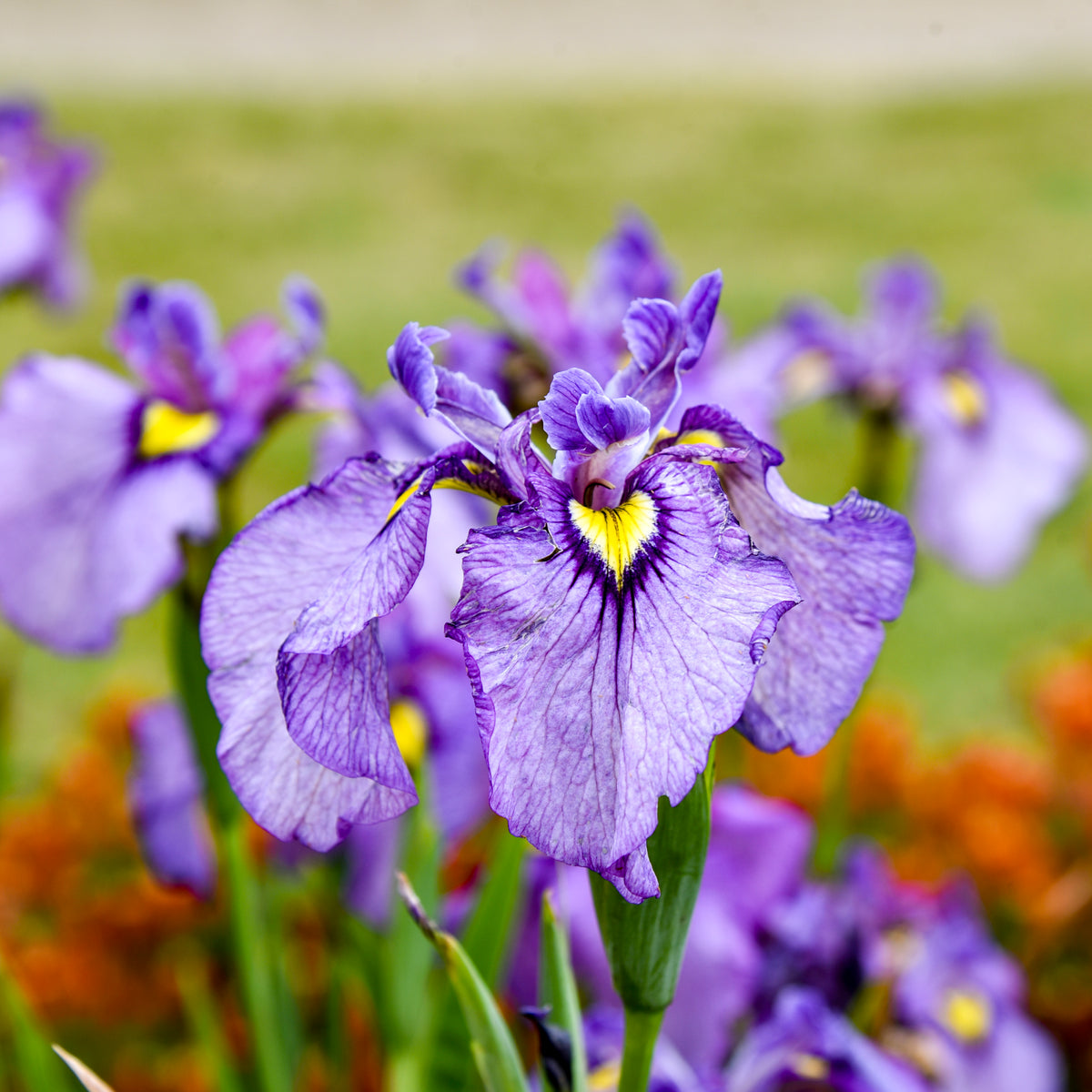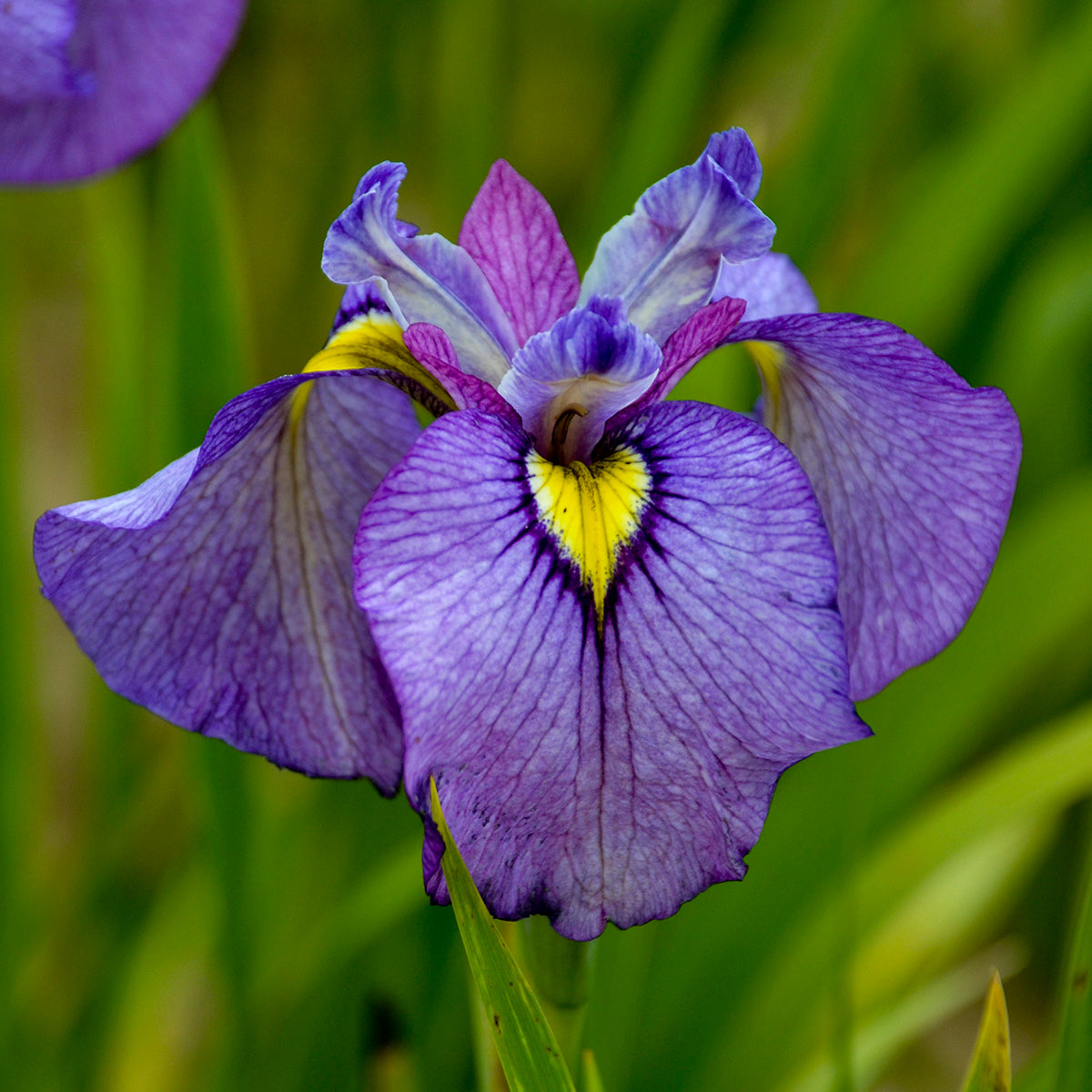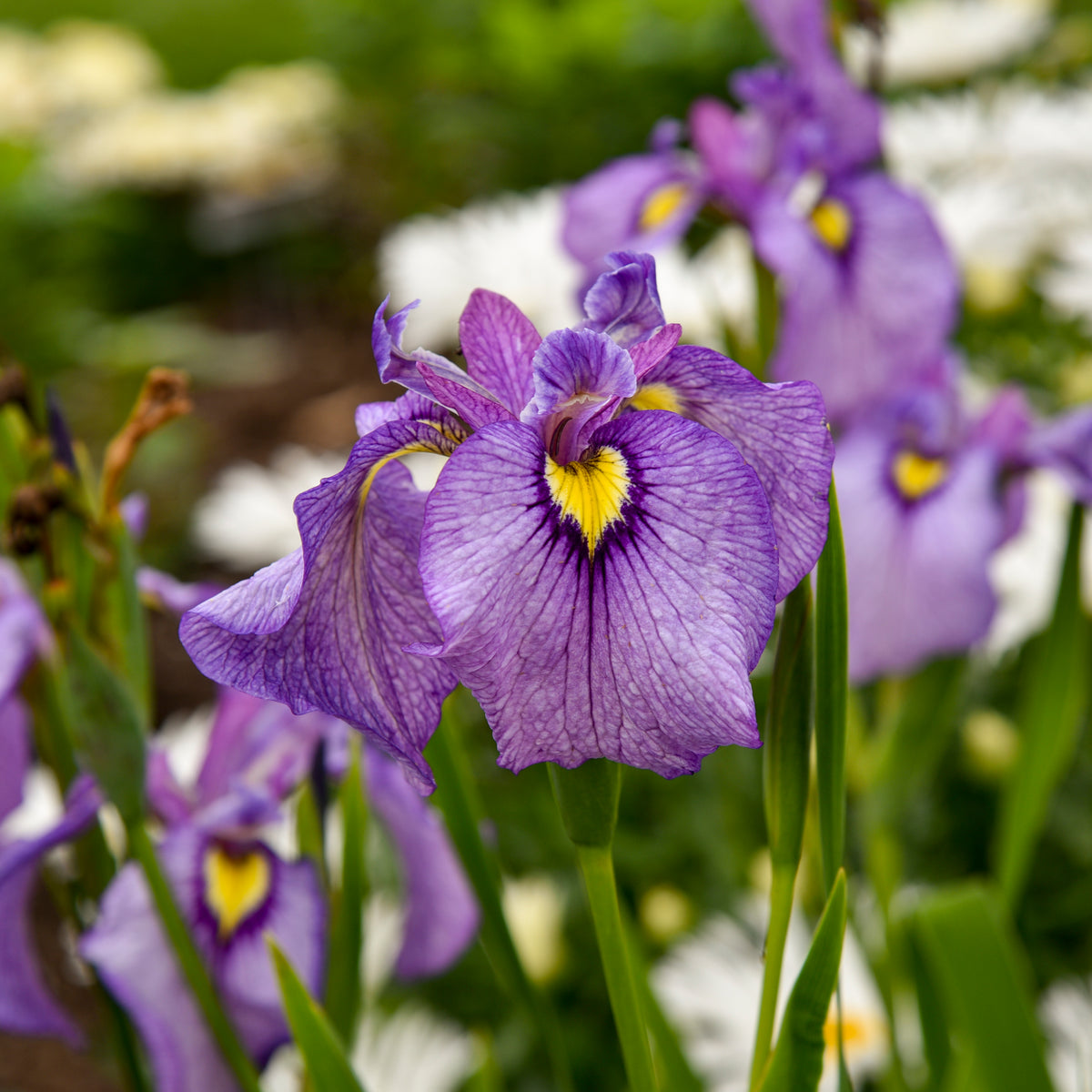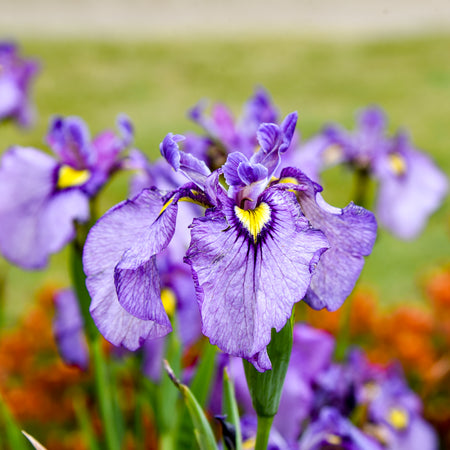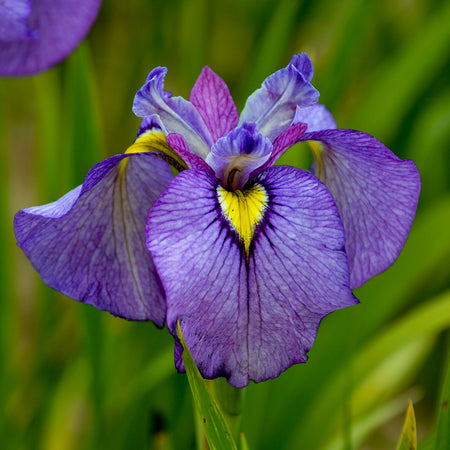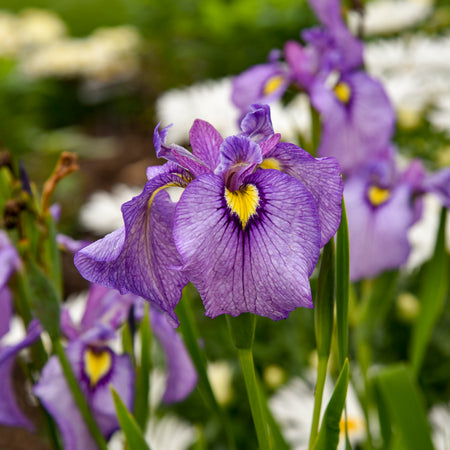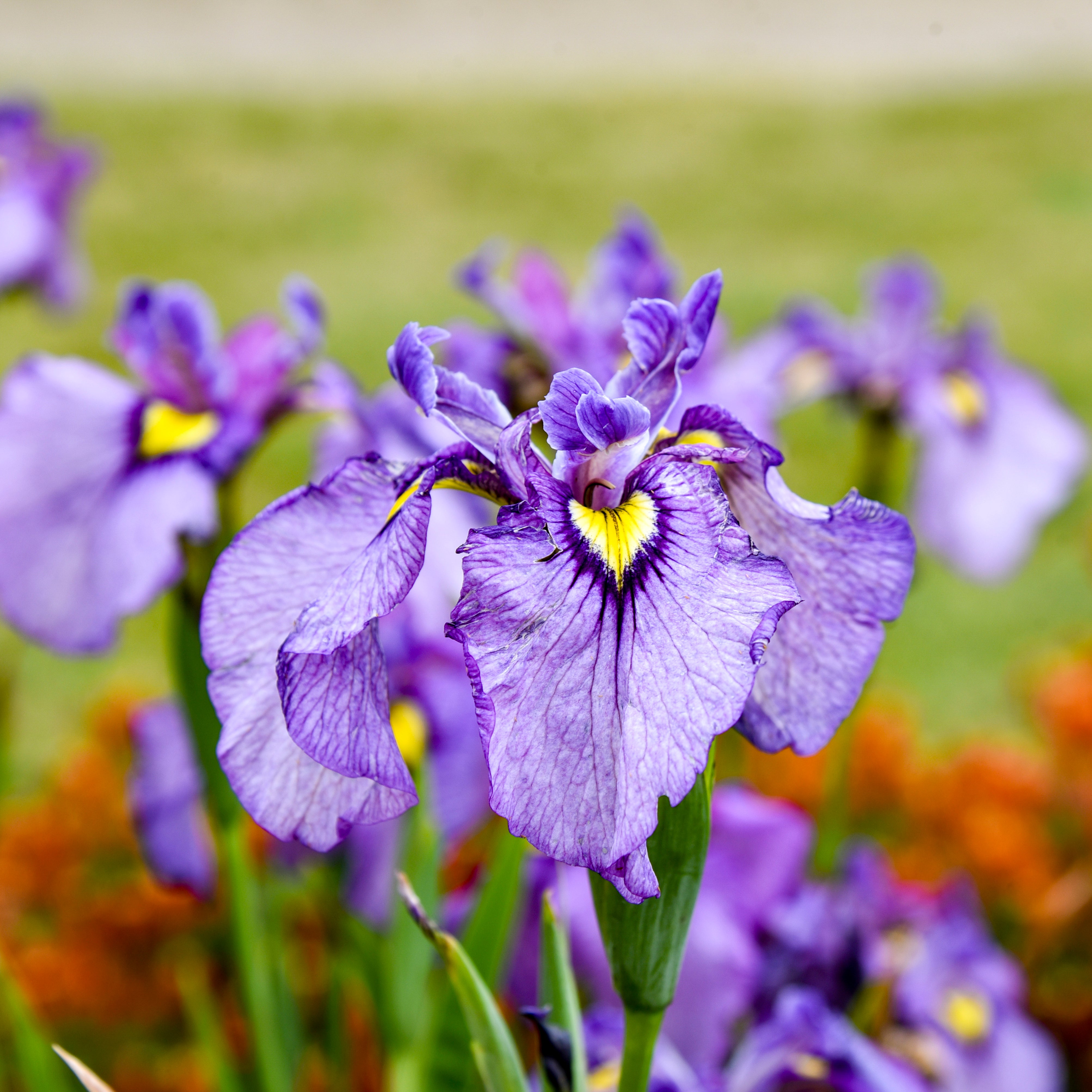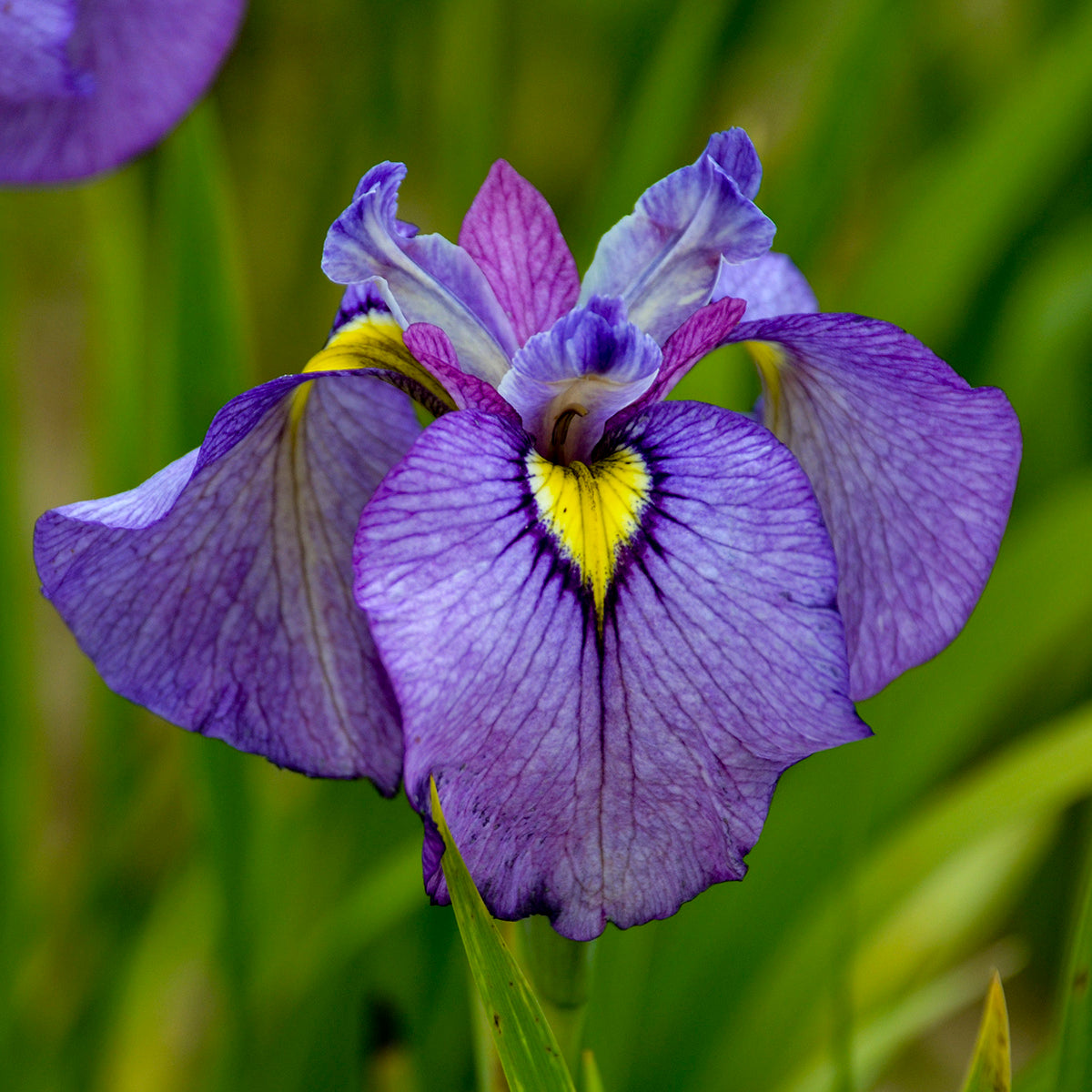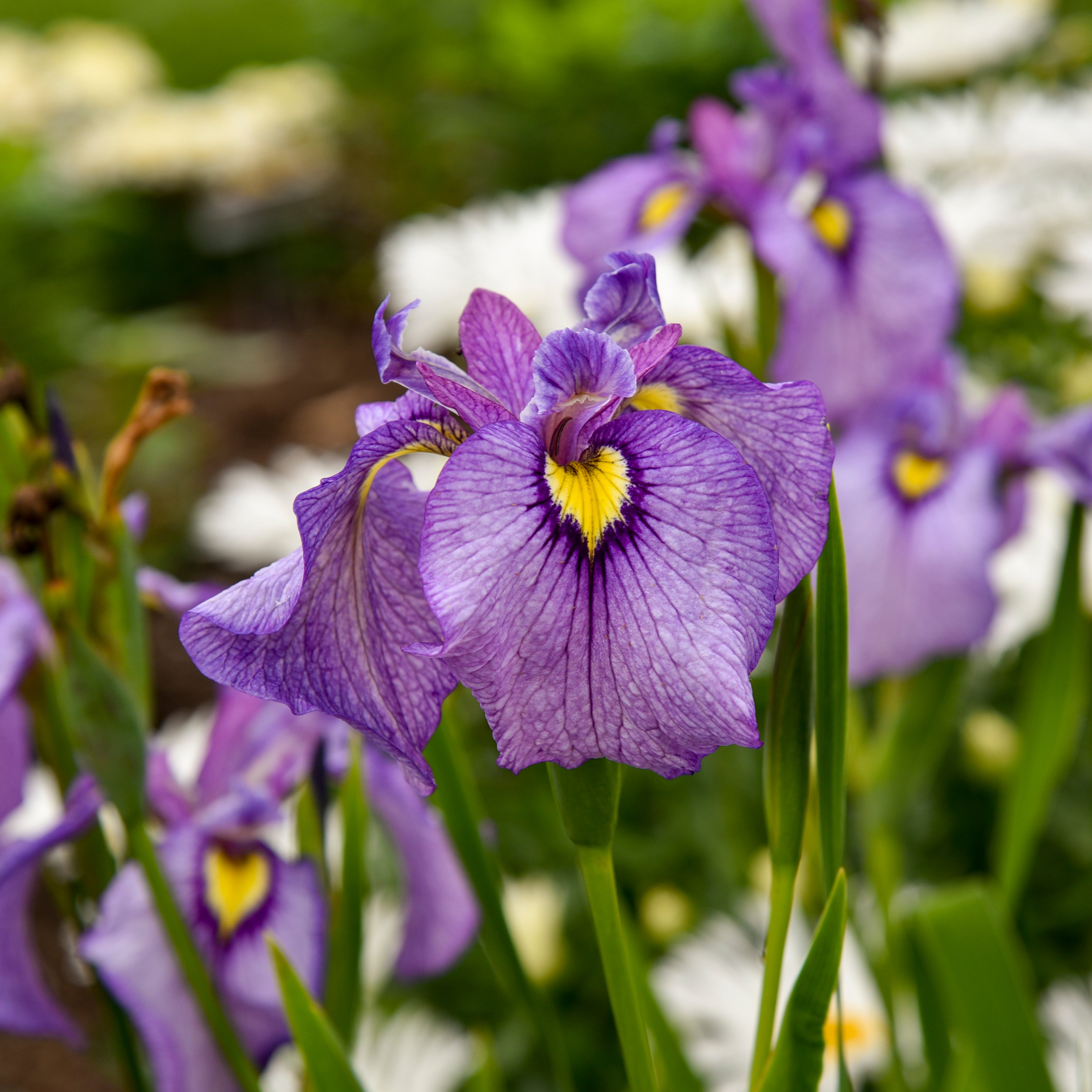Iris pseudata Shiryukyo - Purple Dragon's Valley
Iris pseudata 'Shiryukyo' ('Purple Dragon's Valley')
Mature Height: 45 to 54 inches
Mature Spread: 48 inches
Couldn't load pickup availability
Shipping
It's difficult to find a flower with the complexity, elegance and size of the iris. With Shiryukyo, large purple sepals droop toward the vertical foliage with a substantial bright yellow eye signal lending contrast to the display. This Iris comes in around 4 ft. tall, and is at home in a taller cottage-style garden as it sends flowers high enough to pop among a blend of taller species. It can also be planted as a single or clump to provide vertical reed-like structure similar to ornamental grass. Come winter, iris will cascade away into a bundle of gently rustling leaves.
Expect large purple flowers in early summertime. The unique shape will add eye-catching interest a wide variety of more common flower shapes. As the flowers fade, reeds topped with small seed pods will appear. This variety of iris is mostly sterile, so these pods, while interesting in their own regard, will not result in new plants. The leaves grown in vertically oriented clumps especially early in the season. As the season draws to a close these clumps tend to fall, but if trimmed appropriately provide additional visual and audio interest. We recommend leaving iris foliage and flower reeds until late winter as they provide both interest and habitat for beneficial insects.
Why did we pick Shiryukyo 'Purple Dragon's Valley'?
We love a purple iris, they are a stunning classic with a unique shape. We always try to keep a few in stock. For those looking for a bit more height or stronger vertical appeal, Shiryukyo is a great choice. Hardiness is always an important feature with any plant - your success is important to us. Shiryukyo is a hybrid cross developed between Iris Pseudocorus and Iris ensata, which makes it both beautiful, vigorous and easier to grow. These iris are sterile so they won't reseed, but can be divided.
Photo Credit: Walters Gardens
| Bloom Color: | Purple feathering sepals; Bright yellow signals |
| Bloom Period: | Early Summer |
| Genus & Species: | Iris pseudata 'Shiryukyo' ('Purple Dragon's Valley') |
| Mature Height: | 45 to 54 inches |
| Mature Spread: | 48 inches |
| Plant Spacing: | 40 to 48 inches |
| Planting Depth: | Crown level with the soil line |
| Planting Time: | Division is preferred in fall, but also possible in spring |
| Soil Type: | Moist well drained soil (Consistently moist soil is ideal) |
| Sun Exposure: | Full sun (6+ hours) to part shade |
| Zone: | 4 to 9 |
General care for any tree or shrub is easy, but like any living thing will require your attention. Please educate yourself and follow these simple rules.
Iris pseudata Shiryukyo - Purple Dragon's Valley
The is no other more important factor for a Japanese iris than water. These plants need consistent moisture all year round and if they don't receive it flowers and foliage will be stunted and underperform. This makes them very lovely plants near streams or ponds where water is consistent and the water table remains high. They do require drainage and so water should not cover the roots, it should simply be consistently present. Mulch is a key factor in retaining moisture, so mulch them consistently to make sure that they don't dry out. They like heavy, acidic, rich soil with lots of fertilization. Slow release fertilizer and compost are good adamants for this. For new plantings, do not add granular fertilizer around your newly planted irises. Instead, add the fertilizer to the soil a month or two before planting the Japanese Irises. Once established, fertilize them in early spring and again right after they are finished blooming. Divide these plants every 3-4 years. Do your division in the spring or fall and simply dig up the entire clump then replant the divisions in another location. Plant rhizomes 2-3 inches deep, as new roots will form in the soil above the old roots. When you start to see new roots at the surface it will be time to divide them again.

